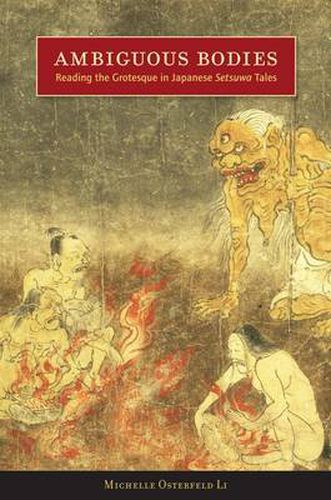Readings Newsletter
Become a Readings Member to make your shopping experience even easier.
Sign in or sign up for free!
You’re not far away from qualifying for FREE standard shipping within Australia
You’ve qualified for FREE standard shipping within Australia
The cart is loading…






Ambiguous Bodies draws from theories of the grotesque to examine many of the strange and extraordinary creatures and phenomena in the premodern Japanese tales called setsuwa. Grotesque representations in general typically direct our attention to unfinished and unrefined things; they are marked by an earthy sense of the body and an interest in the physical. Because they have many meanings, they can both sustain and undermine authority. This book aims to make sense of grotesque representations in setsuwa-animated detached body parts, unusual sexual encounters, demons and shape-shifting or otherwise wondrous animals-and, in a broader sense, to show what this type of critical focus can reveal about the mentality of Japanese people in the ancient, classical, and early medieval periods. It is the first study to place Japanese tales of this nature, which have received little critical attention in English, within a sophisticated theoretical framework. Li masterfully and rigorously focuses on these fascinating tales in the context of the historical periods in which they were created and compiled.
$9.00 standard shipping within Australia
FREE standard shipping within Australia for orders over $100.00
Express & International shipping calculated at checkout
Ambiguous Bodies draws from theories of the grotesque to examine many of the strange and extraordinary creatures and phenomena in the premodern Japanese tales called setsuwa. Grotesque representations in general typically direct our attention to unfinished and unrefined things; they are marked by an earthy sense of the body and an interest in the physical. Because they have many meanings, they can both sustain and undermine authority. This book aims to make sense of grotesque representations in setsuwa-animated detached body parts, unusual sexual encounters, demons and shape-shifting or otherwise wondrous animals-and, in a broader sense, to show what this type of critical focus can reveal about the mentality of Japanese people in the ancient, classical, and early medieval periods. It is the first study to place Japanese tales of this nature, which have received little critical attention in English, within a sophisticated theoretical framework. Li masterfully and rigorously focuses on these fascinating tales in the context of the historical periods in which they were created and compiled.